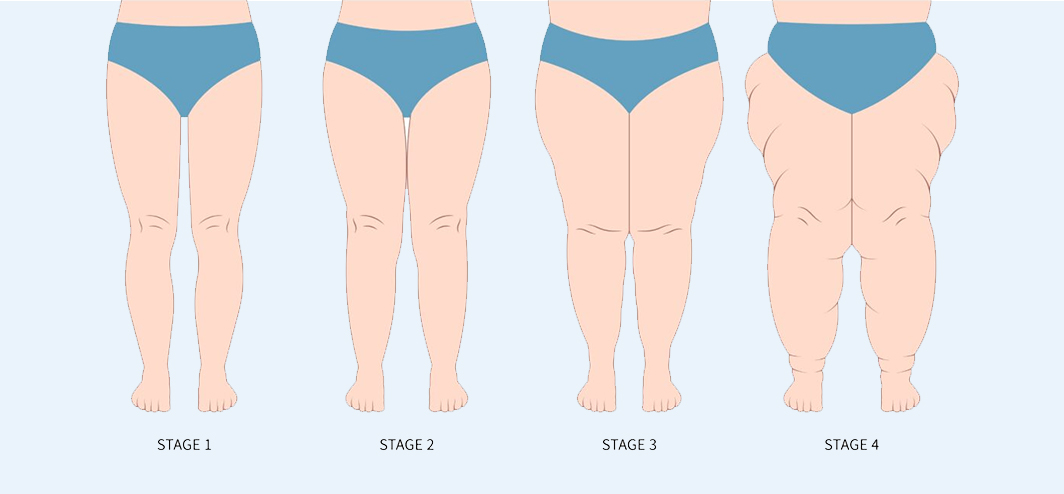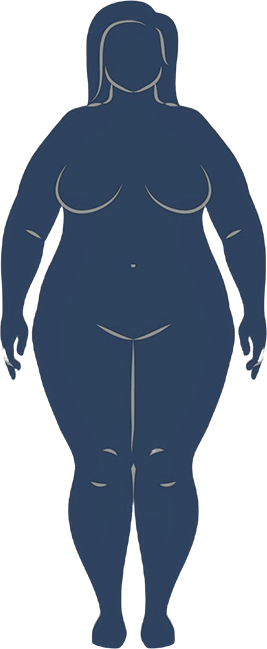Stages of Lipedema

At this time, there are four recognized stages of Lipedema. As with many other diseases that use a staging structure to determine treatment, lipedema staging ranges from mild to extreme as follows:
Stage I
The skin in the affected area is soft and smooth. Swelling increases during the day, but typically resolves with rest and elevation. There is at buildup around pelvis, buttocks, and hips.
Stage 2
The skin develops indentations and the subcutaneous tissue starts to feel more tough and nodular. Lipomas (fatty lumps between your skin and the underlying muscle layer) may appear. Large fatty deposits begin to form on the upper and lower legs and around the ankles. Eczema and skin infections (erysipelas) may also be present. While swelling increases during the day, as in stage 1, it is less affected by rest and elevation.
Stage 3
There is more hardening of connective tissues and the swelling becomes consistently present and does not resolve with rest and elevation. Large masses of skin and fat cause deformations in the thighs and knees.
Stage 4
Lymphedema occurs. This stage is also called Lipo-Lymphedema. Larger masses of skin and fat overhang and the swelling is consistently present. Fibrosclerosis, possibly elephantiasis. Legs can become stiff and lymph fluid can begin to leak from lymphatic vessels.
